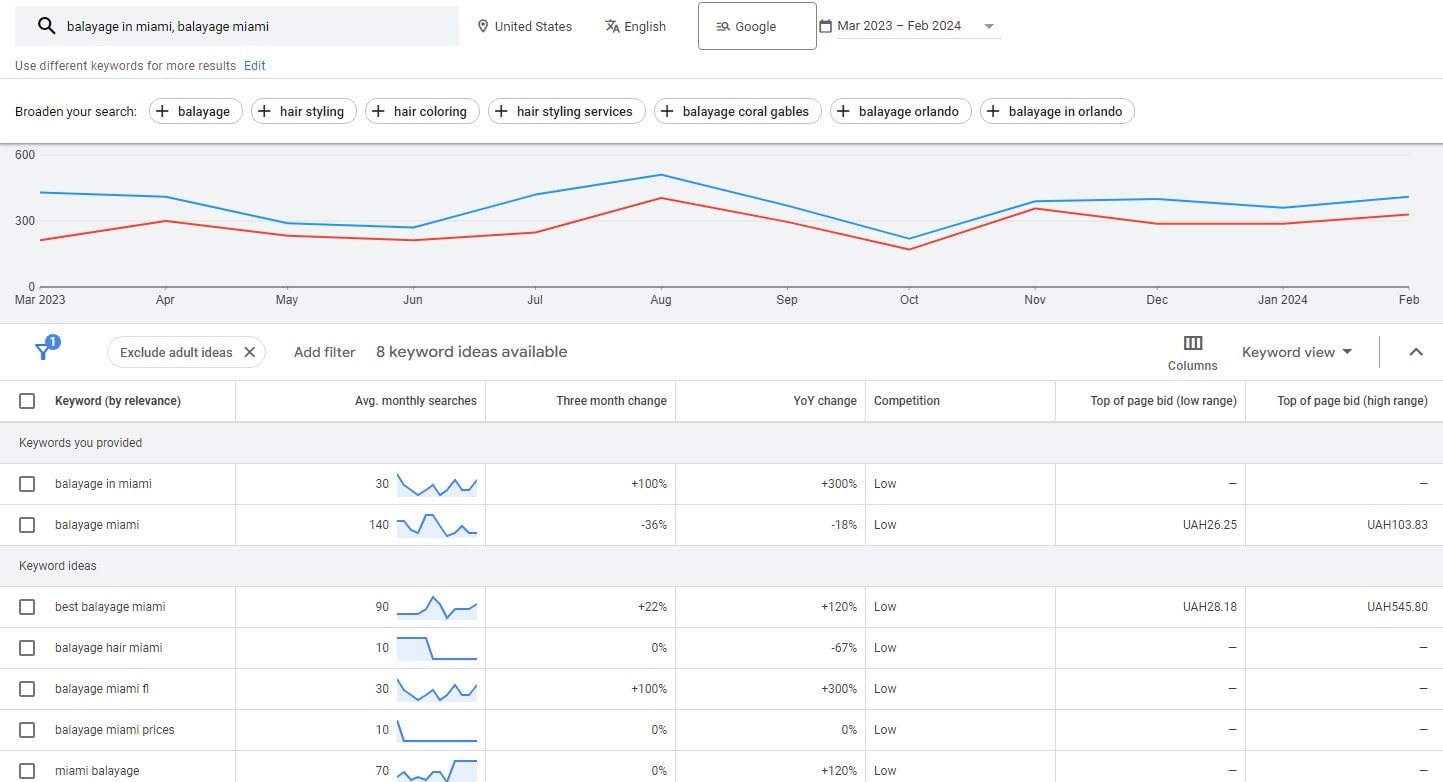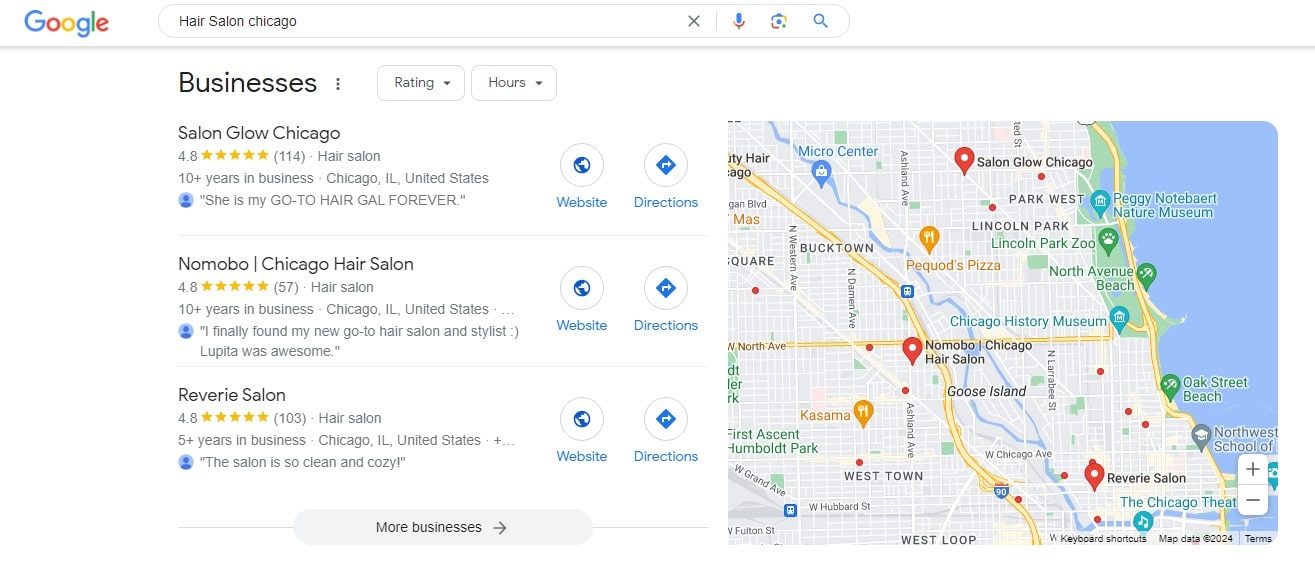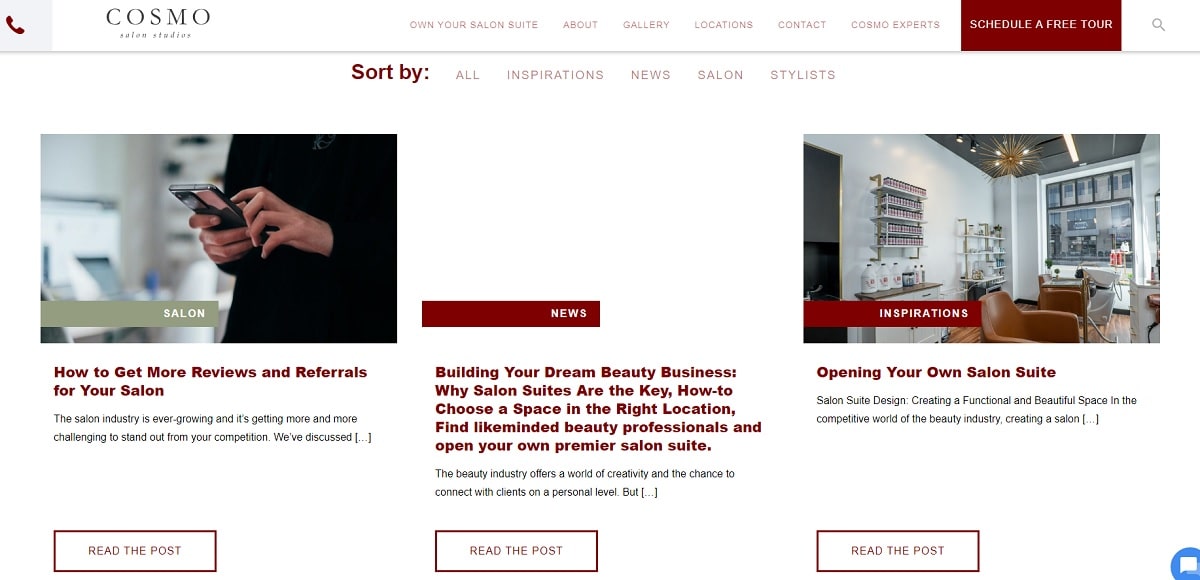Why can’t hair salons trim their SEO strategies? With solid SEO, they can avoid becoming ‘invisible’ online! Effective SEO is like a great haircut for modern salons: it draws attention and makes a first impression. In this article featured in Plerdy’s blog, we’ll explore how SEO can ‘elevate’ your salon to the top of Google search results. From keywords to content marketing, we provide everything you need to ensure your salon ‘shines’ in the digital world.

Understanding the Basics of SEO for Hair Salons
Imagine walking into a bustling hair salon, but it’s not the snip of scissors that’s buzzing – it’s the chatter about SEO. Surprising, right? Yet, in the digital age, understanding SEO is as crucial for hair salons as knowing the latest hair trends. This section delves into the essentials of SEO, ensuring your salon’s website is as polished and attractive as your clients’ hairstyles.
What is SEO, and Why is it Crucial for Hair Salons?
Search Engine Optimization (SEO) optimizes your website for Google’s search results. Think of it as creating a roadmap that leads potential clients directly to your salon’s digital doorstep. SEO helps hair salons stand out in a congested digital market, where visual attractiveness and local clientele are crucial.
You may make your hair salon easily found by adding keywords, improving your website’s user experience, and implementing local SEO. Forbes highlights the importance of SEO for small businesses, noting that a strong online presence is critical for attracting and retaining customers. With effective SEO, your salon can gain higher visibility, increased web traffic, and, ultimately, more bookings.
Key SEO Terms and Their Significance
To navigate the world of SEO, it’s important to understand some key terms:
- Keywords: These are words or phrases that potential clients use when searching for salon services. Including relevant keywords in your website’s content increases the chances of your hair salon appearing in search results.
- Backlinks: These are links from other websites to yours. High-quality backlinks from reputable sites improve your salon’s website authority and ranking.
- Local SEO: Hair salons serving local customers must optimize their websites for location-based searches.
- SERP (Search Engine Results Page): Local hair salons must improve their websites for local searches. A higher position on the SERP means more visibility for your salon.
Moz, an authority in SEO, offers a comprehensive guide to these terms and more, helping you understand how to apply them effectively.
Mastering the basics of SEO is a game-changer for hair salons in the digital landscape. By leveraging key SEO strategies, you ensure that your salon is not just a hidden gem but a shining beacon for potential clients. Visibility is the key to success in the online search world.
Crafting an SEO Strategy for Hair Salons

Just like a perfect haircut needs a plan, a solid SEO strategy is crucial for hair salons looking to make a mark online. Not simply found, but by the correct people. This section aims to lay out a comprehensive SEO strategy for hair salons, ensuring that your salon is their top result when potential clients search for hair salon services.
Identifying Target Keywords
The foundation of any SEO strategy lies in identifying the right keywords. This means understanding what potential clients might type into a search engine for hair salons. Consider terms related to services offered, such as “balayage in [City Name]” or “best haircuts for curly hair.” Use tools like Google’s Keyword Planner or Moz’s Keyword Explorer to research and select keywords with a high search volume but moderate competition.
Including location-based keywords is vital for local businesses like hair salons. Phrases like “hair salon near me” or “hairdressers in [City Name]” can drive local traffic to your site. Remember, effective keyword targeting is about quality, not quantity. Choose keywords that fit your salon’s services.
On-Page SEO Elements
On-page SEO involves optimizing various elements of your website to make it more search-engine friendly. Start with each page’s title tags and meta descriptions, incorporating your chosen keywords. They improve search engine optimization and boost website clicks.
Content is king in SEO. Ensure your website features well-written, informative content that incorporates keywords naturally. Blog posts about hair care tips, the latest styling trends, or the benefits of different salon treatments can engage readers and boost your site’s relevance and authority.
Another crucial aspect is optimizing your site’s images. Use high-quality images and include keywords in the file names and alt text. This improves your site’s user experience and contributes to image search results.
Importance of Mobile Optimization and Site Speed
In today’s mobile-first world, having a mobile-optimized website is non-negotiable. Google ranks sites based on their mobile versions, so use responsive design to make your site look and operate properly on all devices.
Site speed is another critical factor. A slow-loading website can frustrate users and negatively impact your search engine rankings. Google’s PageSpeed Insights analyzes your site’s performance and suggests improvements.
Crafting an SEO strategy for your hair salon can be manageable. Start with thorough keyword research, optimize your on-page elements, and ensure your site is mobile-friendly and fast. SEO is an ongoing process. Keep up with the ever-changing digital industry by analyzing and adjusting your plan. The following techniques will boost your salon’s search engine rankings.
Leveraging Local SEO for Hair Salons

In the competitive world of hair styling, being the neighborhood’s go-to salon is like having the golden scissors. Local SEO is your map of this treasure. It’s about ensuring when someone searches for the best hair salon nearby, yours pops up. This section will guide you through maximizing local SEO for your hair salon and turning local searches into local clients.
Optimizing Google My Business for Salons
Optimizing your Google My Business (GMB) listing is a crucial step in local SEO. It’s the digital equivalent of putting a signpost on the busiest street in town. Start by claiming your GMB profile, then fill it with accurate and detailed information: your salon’s name, address, phone number, and hours of operation.
Next, categorize your business correctly. Are you a hair salon, a beauty salon, or a barber shop? This helps Google understand exactly what services you offer. Upload high-quality images of your hair salon, work, and team. Visuals make your listing more appealing and trustworthy.
Encourage and respond to client reviews, positive or negative. Reviews boost not only your salon’s visibility but also its credibility. Search Engine Land emphasizes the importance of online reviews in influencing consumer decisions.
Remember to keep your information up-to-date. Any changes in your services, hours, or location should be promptly reflected in your GMB profile.
Building Local Citations and Reviews
Local citations mention your salon’s name, address, and phone number on other websites. These can be local business directories, social media platforms, or industry-specific sites. Consistent citations across the web reinforce your salon’s local presence.
Start by listing your salon in local business directories like Yelp, Yellow Pages, and local chambers of commerce websites. Ensure your salon’s details are consistent across all platforms. Inconsistencies can confuse search engines and potential clients.
Reviews are super important for local SEO. If your clients are happy, ask them to leave reviews on your Google My Business page and other places. In 2020, 87% of people will read reviews about local businesses online, so that reviews can make a difference to your salon’s reputation and search engine rankings.
Leveraging local SEO is like hosting a grand open house for your hair salon. Salons can be more noticeable and appealing to locals when their Google My Business profiles are optimized, local citations are built, and reviews are gathered. Implement these strategies, and watch your salon climb the ranks in local search results, bringing a steady stream of clients through your doors.
Content Marketing and SEO for Hair Salons

In the beauty industry, where trends and styles change like the wind, a robust content marketing strategy aligned with SEO can anchor your salon grounded in the digital world. It’s about creating content that attracts, engages, and retains clients. This section will delve into how a hair salon can weave content marketing with SEO to create a stunning online presence that mirrors the creativity and elegance of its physical hair salon.
Blogging and SEO
Blogging isn’t just sharing thoughts and ideas; it’s a strategic tool for enhancing your salon’s SEO. By regularly posting blogs about topics relevant to your target audience, you infuse your website with fresh content, which search engines love. Topics can range from hair care tips and the latest styling trends to the benefits of salon treatments. These posts should naturally incorporate your chosen SEO keywords to improve your website’s visibility in search results.
Keyword targeting is possible with each blog article. For example, a post about “The Latest Balayage Trends” can attract clients looking for this service. Use engaging titles, include keywords in headings, and ensure the content provides real value to readers.
Blogging also opens doors for internal linking, which strengthens your site’s SEO. Linking to service pages in blog posts can interest readers and show search engines that your website is useful. Quality over quantity is key. A well-researched, engaging blog post that resonates with your audience is more valuable than multiple superficial articles. HubSpot offers a guide on creating compelling content to boost your hair salon’s SEO efforts.
Utilizing Social Media for SEO
Social media and SEO may seem like different worlds, but they complement each other perfectly for hair salons. A strong social media presence can enhance SEO efforts by showcasing salon work, sharing blog posts, and engaging with your audience. Sharing content from your website on social media increases traffic and brand awareness.
Promote your blog entries, client before-and-after images (with permission), and salon events and promotions on social media. These activities keep your audience engaged and more likely to visit your website for more information.
In addition, social media profiles often rank in search results for your salon’s name. Ensure your profiles are updated, professional, and reflect your salon’s brand. This not only aids in SEO but also presents a cohesive digital presence.
Integrating content marketing with SEO is like creating a masterpiece hairstyle – it requires skill, creativity, and attention to detail. By focusing on quality blog content and a vibrant social media presence, you enhance your salon’s online visibility, attracting more clients to your chairs. Remember, your content is as crucial as your scissors in the digital beauty world.
Monitoring and Maintaining Your Salon’s SEO

Think of your salon’s SEO like a hairstyle – it needs regular maintenance to keep looking its best. Monitoring and updating your SEO strategy ensures your hair salon stays visible and attractive in the ever-changing digital landscape. This section focuses on the essential practices for keeping your SEO strategy sharp and effective, just like the best haircuts in your salon.
Using Analytics to Track SEO Performance
To evaluate your SEO efforts, utilize analytics tools like Google Analytics to track traffic, user behavior, and how people reach your site. Key metrics to monitor include organic search traffic, bounce rate, and the rankings of your targeted keywords.
Regularly reviewing these metrics gives you insights into what’s working and what’s not. For instance, if certain pages have high traffic but also high bounce rates, it might indicate that the content needs to meet users’ expectations.
Additionally, tracking your targeted keywords’ rankings helps assess the effectiveness of your content strategy. Are your chosen keywords driving traffic to your site? If you still need to, it might be time to revise your keyword strategy. Moz, a leader in SEO software, provides a comprehensive guide on using analytics to track and improve your SEO.
Updating and Refining Your SEO Strategy
SEO is not a set-it-and-forget-it strategy. Search engines constantly update their algorithms, and consumer behaviors change over time. Regularly updating and refining your SEO strategy is crucial to maintain high search engine rankings.
Keep up with SEO trends and algorithm changes. Implementing these updates into your strategy keeps your salon ahead of the competition. This might involve adjusting your keyword strategy, updating old content, or improving your site’s mobile experience.
Additionally, continuously refining your content strategy keeps your website fresh and relevant. This can involve adding new blog posts, updating service pages, or revamping the entire website layout to improve user experience.
You must routinely monitor and tweak your hair salon’s SEO to stay on top of search engine rankings. In the fast-paced world of beauty and styling, staying ahead of the trends is key to success.
Conclusion
As we wrap up our guide on SEO for hair salons, remember that your salon’s online presence is like a head-turning hairstyle: it requires creativity, care, and regular upkeep. By implementing the strategies discussed, your salon can shine in the digital spotlight, attracting more clients and enhancing your brand. But don’t stop here; continue exploring and learning. For more insights on digital marketing and website optimization, check out other articles on the Plerdy blog. Embrace these tools and watch your salon’s digital presence flourish. Curious about how Plerdy can further elevate your online success? Visit our website for more information and take the first step towards transforming your salon’s digital journey.
